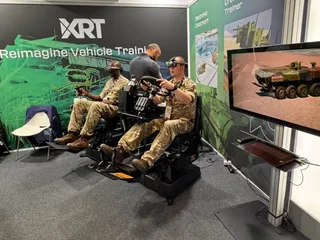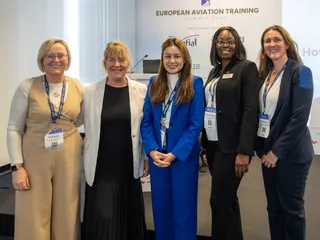Australia Set for Advanced Air Mobility Operations Within Five Years
Contact Our Team
For more information about how Halldale can add value to your marketing and promotional campaigns or to discuss event exhibitor and sponsorship opportunities, contact our team to find out more
The America's -
holly.foster@halldale.com
Rest of World -
jeremy@halldale.com
As Australia prepares for a new era of aviation, industry leaders are laying the groundwork for Advanced Air Mobility (AAM) to transform how people and goods move across the continent.
Glenn Ryan, CEO of Aviation Australia and APATS 2025 Conference Speaker, believes the country is uniquely positioned to benefit from AAM technologies. "Australia is so reliant on aviation. We're an island and we're a big island," Ryan explained to APATS Maintenance Conference Chair, Stuart Membrey.
"For people who live remotely and regionally, they've got to get on an aircraft."
Ryan projects that Australia will reach initial operating capabilities for AAM within five years, with the 2032 Brisbane Olympics serving as a potential showcase for the technology. However, he emphasised that truly scalable commercial solutions are likely a decade away, making workforce development a critical priority.
"What we really see right now is our involvement with a number of the really large providers to see what the ecosystem is, what are the skill sets in that ecosystem for the workforces that we've got to generate," Ryan said.
Register for APATS 2025!This workforce challenge is already being addressed through practical training programs. Ryan McMahon, National Remote Pilot Training Manager at Aviation Australia, demonstrated advanced drone systems capable of carrying 40-kilogram payloads over 16-kilometre ranges – capabilities that were "inconceivable a few years ago" for commercially available remotely piloted aircraft systems.
McMahon's team is working closely with regulators and industry to develop comprehensive training frameworks that span from secondary education through to industry applications. "We're really creating that complete training pathway out into industry," he noted, adding the importance of building skilled workforces to support AAM growth both domestically and internationally.
As the industry prepares for eVTOL and beyond visual line of sight operations, both speakers stressed the importance of collaboration between regulators, training providers, and industry to ensure Australia is ready to scale when AAM technologies reach commercial viability.


